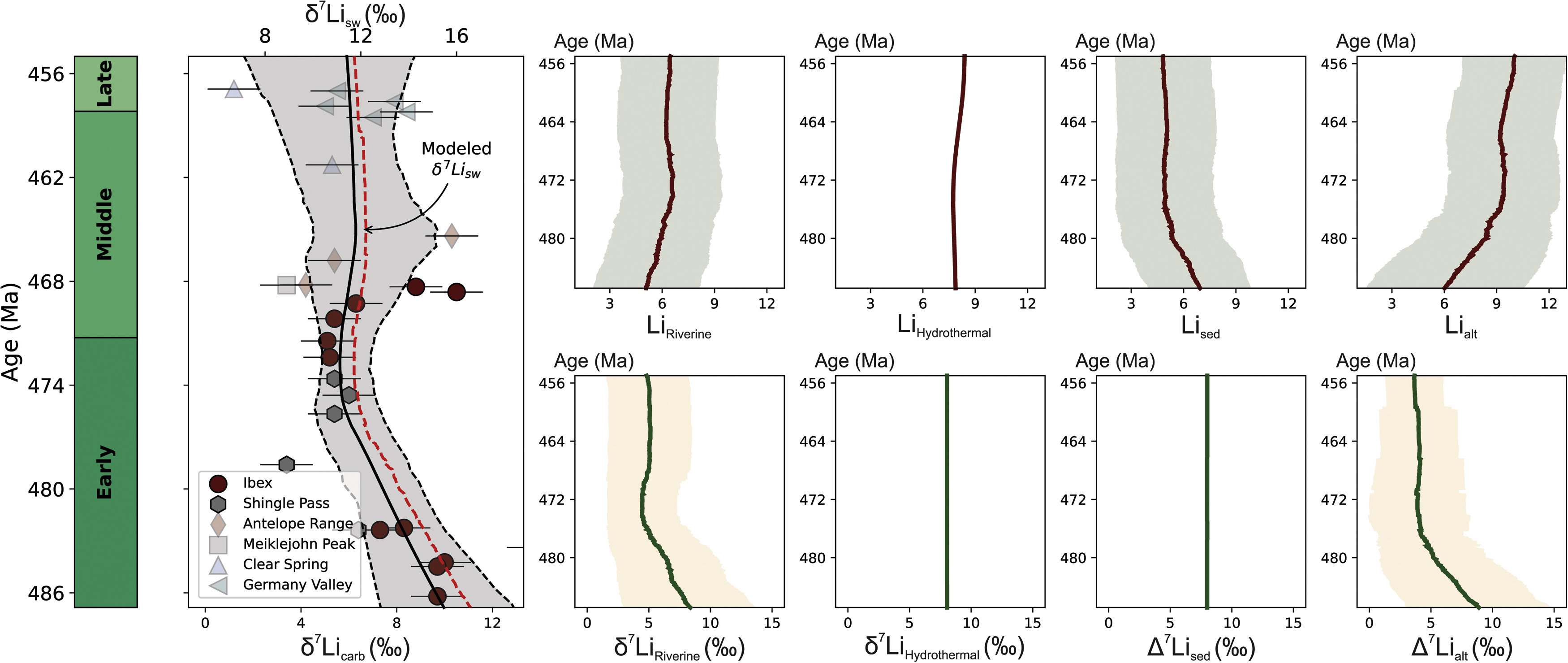New Paper: Tracking Ancient Silicate Weathering using Lithium Isotope Stratigraphy
I’m excited to share our latest paper published in Earth and Planetary Science Letters where we explored how Earth’s climate and weathering patterns changed during the Ordovician Period (about 487-443 million years ago) using lithium isotopes preserved in ancient rocks.
What’s the big deal about lithium?
Lithium isotopes in rocks are like nature’s weathering thermometer - they can tell us about how intensely rocks were being broken down by chemical weathering in the past. This is super important because weathering of rocks is one of Earth’s main ways of removing CO2 from the atmosphere over long timescales.
What did we find?
By analyzing rocks from six different locations across what was once Laurentian paleo-continent, we found evidence for a major shift in how rocks were being weathered during the Early Ordovician. Specifically, we saw a change toward what commonly known as “congruent weathering” - a style of weathering that was likely more efficient at consuming CO2.

This shift coincided with some big changes in Earth’s paleogeography, including the movement of volcanic islands (the Taconic Arc) into the tropics where weathering is typically more intense. We think this geographical change, combined with the early evolution of primitive land plants, may have helped drive global cooling during this time.
Why does this matter?
This work helps us better understand how Earth regulated its climate in the deep past through the weathering of rocks. It also shows how changes in geography and the evolution of life can influence global climate through their effects on weathering processes.
You can read the full paper here: Lithium isotope stratigraphy and Ordovician weathering
A huge thanks to my co-authors and everyone who helped with this research! This work was supported by the Ohio State University School of Earth Sciences and the Geological Society of America’s Charles A and June R. P. Ross Research Award for research in biostratigraphy, stratigraphy and stratigraphic correlation.

Comments